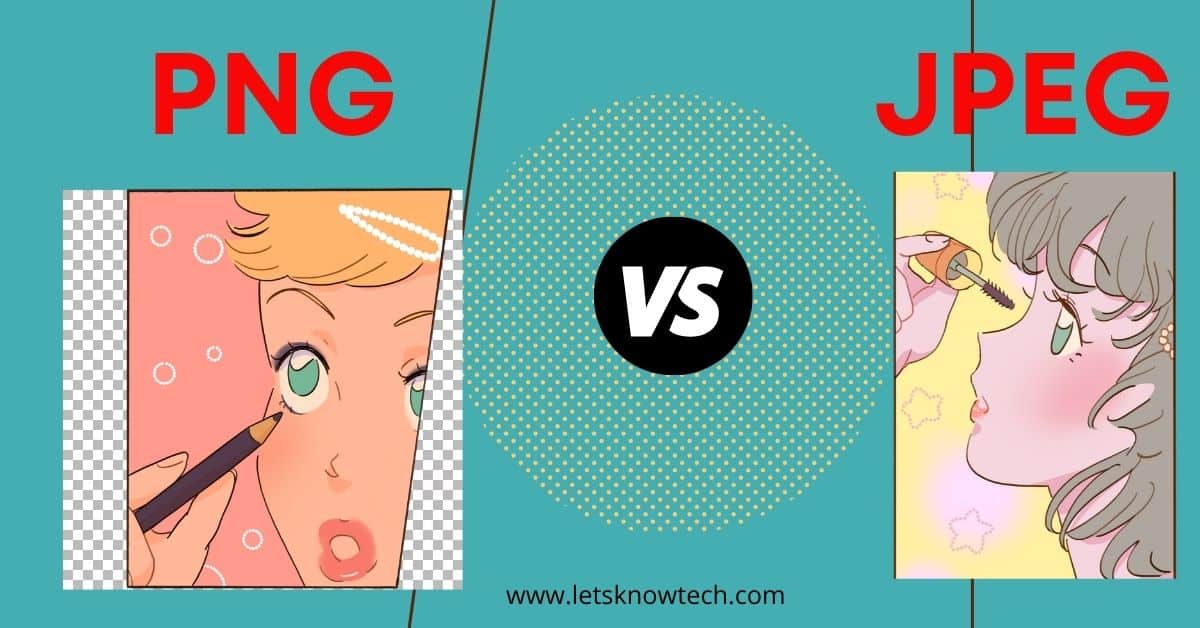png vs jpeg – is png or jpeg better

Png vs jpeg image formats have different advantages, but neither one is superior to the other in every way. The best format to use depends on what you’re doing with the image and where you are in the design process. In this article, we’ll compare png vs jpeg and tell you when it’s better to use each format. We’ll also cover the pros and cons of png vs jpeg, so you can make an informed decision about which format works best for your project.
The difference between png vs jpeg
Images in the web are represented by either jpeg, a picture taken and put through a compression algorithm, or png, an image file type that compresses images. The difference between the two types of images lies in how they compress images. Png’s use either a lossless technique that does not take anything away from the original file and does not harm it with artifacts from compression, or a lossy technique where artifacts are introduced which make the file size smaller. where, Jpegs use only lossy techniques which has a negative impact on the quality of the image.
Jpegs, being a lossy compression algorithm, take away much from image quality. An image compressed with jpeg artifacts will not be as sharp as it would have been if no compression had been used at all. When an artifact-free png file is compressed, it does not suffer any loss of quality because of that compression. A png may lose some quality when resized due to its lack of compression, but it retains its full color depth. A jpeg also retains full color depth but can show pixelation or distortion when scaled down due to its large amount of detail loss during the compression process.
What are the disadvantages of each format?
Jpg images are a compressed format of image. When an image is compressed the colors get changed and this can create a different look than when the picture was originally taken. Png files are uncompressed and they keep the integrity of the original colors, but this can lead to larger file sizes. Png files offer more transparency options than jpgs because they have a 24-bit option whereas jpgs only have 8-bits. The disadvantages to using png files are that they cannot be indexed by search engines, they do not work with most video applications and their transparent backgrounds often interfere with graphic programs like Microsoft Office programs or Adobe Illustrator CS3, which require another element to create transparency for these two programs respectively.
What can be done with jpeg and png
The popular format for photos on the internet these days seems to be the .jpeg image. Though this type of image does not typically come with a transparent background, it can still be used for animations in conjunction with a .png image file. The default setting for a .jpeg photo file is 300 DPI and 72 ppi, which makes for great quality pictures with high fidelity when displayed on digital screens like your computer monitor. The popular animated GIF filetype (.gif) is most often saved as a .jpg image because it also comes with an automatic color palette restriction that prevents dithering from occurring.
As well, if you’re interested in doing something other than animation but want to retain transparency then you’ll need to use the .png extension instead. These images have support for alpha channels, which allow us to create see-through areas where none existed before. You may notice a difference in quality depending on what you plan to do with each filetype since there are different formats available for each one. However, for simple needs such as displaying photos online or sharing them through social media outlets, .jpeg will work just fine. If you plan to animate the image and maintain transparency then it’s best to stick with .png files; however, if you only care about clarity of pixels (meaning no animation), you should use .jpeg files due to their higher resolution capability.
jpeg vs png; Which format should I use in different situations?
When you are looking to post images on the web in general, it’s a good idea to keep file size in mind and use the most efficient format for your needs. Images that have detail and vibrant colors work best with png format (example: logos). Images with less color variation are typically suited for jpeg format (example: landscapes). Jpeg image files can be significantly smaller than png image files of the same quality. If you want an image to take up as little space as possible, use a jpeg format. If you want more control over how an image looks when it’s compressed then choose png.
Which tools can I use to convert images into other formats?
Many tools exist to convert images into other formats. Some are free while others are paid, so which one to use will depend on your preference and budget. Kraken is a free tool that can be used to optimize the quality of a JPG file as well as reduce its size by increasing compression or converting to PNG. Format Factory has an advanced option that converts images into many different formats including TIFF and EPS. ImageOptim helps save space by compressing image file size, limiting colors and removing unneeded data while Resizepixel lets you resize and convert images all in one place.

I’m Ansak Mahir from Sri Lanka. Technology enthusiast from a young age. Currently an undergraduate of BSC in Software Engineering (Kingston UK) and BSC (hons) in Information Technology & Management (University of Moratuwa). I love blogging and spreading the knowledge in a unique perspective. I’m also a reputed freelancer for web design and development



